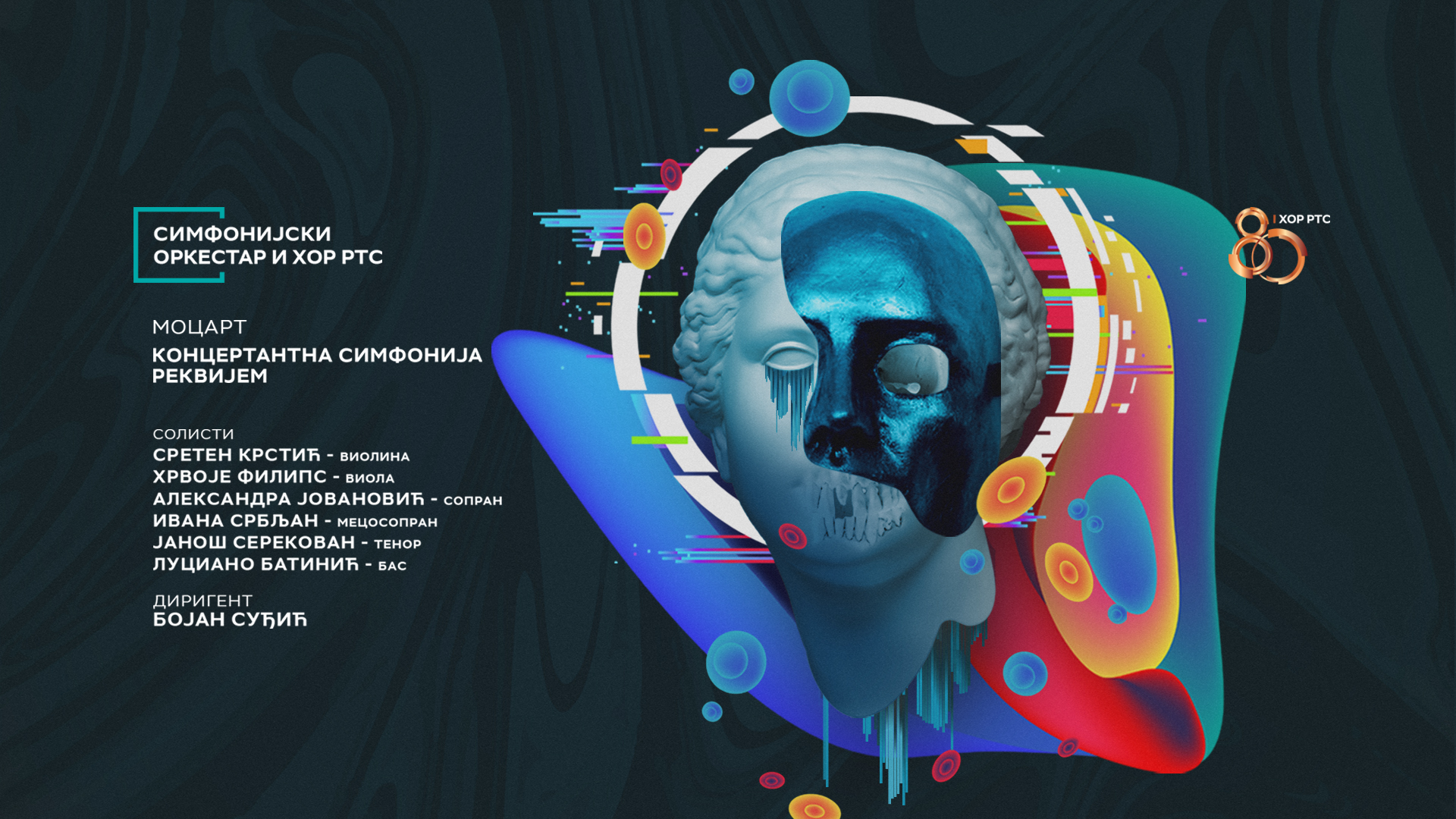
MAY IN THE SIGN OF MOZART
For the RTS Symphony Orchestra and Choir, May will be in the sign of Mozart’s music. On Wednesday, 15 May, at 20:00, at Sava Center, the audience will be able to enjoy the performance of two popular works from the opus of this creator. Along with the ensembles of the RTS Music Production, on the concert podium will be also great soloists, the concert maestro of the Munich Philharmonic Orchestra, violinist Sreten Krstic, and solo violinist of the Croatian Radio and Television Symphony Orchestra – Hrvoje Filips. Besides, these artists, in the performance of “Concert Symphony” and “Requiem”, we will listen as soloists already famous soloists – soprano Aleksandra Jovanovic, soprano Ivana Srbljan, guest from Croatia, tenor Janos Serekovan, a guest from Hungary, bass Luciano Batinic, who comes from Slovenia. Bojan Sudjic will be a maestro.
As a composer, Mozart is considered not only a giant of artistic music, but his works have overcome the limits of genres, and today we recognize him as an important pop culture representative. He lived only 35 years. Mozart traveled, played and conducted the premieres of his works, almost in all countries of Europe. He composed a great number of compositions in almost all musical types. Some defined them as achievements of immortal beauty, others gave them the attributes of impassable value, the third recognised the divine inspiration in music, and the profession spoke about the lightness of creation. In any case, he is a master of his craft, who placed a high-quality scale on a high level with his opus.
“Concert Symphony” was composed in 1779, at a time when Mozart was on a European tour, which included, among others, Mannheim and Paris, cities that were considered to have a strict audience. According to many chroniclers, this unusual piece is a part of Mozart’s music experiments to write a composition that will include the best features of the symphony and concert. Although he wrote several performances of this type, “Concert Symphony”, written for solo violin, viola and symphony orchestra, is the only one today that is completely preserved. But it was also a hit for a sophisticated Parisian audience, who perfectly accepted the work. And not just that, it became one of the most popular compositions in Paris in the 18th century.
Today “Concert Symphony” is one of the most popular Mozart’s works. In the magazine “Gramophone”, one of the world’s best classical music magazines, Richard Wigmore notes that over 40 editions of this piece were on the top list more than 20 times. The work inspired many artists to rearrange it for various camera compositions. The film audience had the opportunity to listen to it as applied music in many movies, among which are especially distinguished Sophie’s choice by William Styron and Amadeus by Milos Forman.
Certainly, there is no more famous opus ultimum than Mozart’s “Requiem”. The work gained popularity, partially because of the mystery of the legend about its creation. However, besides the imaginative, apocryphal versions of an unknown messenger, wrapped in a gray cloak, who orders from Mozart a piece for an anonymous person, the real circumstances of the creation of “Requiem” are completely trivial and familiar to everyone. But, working continuously, in the absence of time, already sore health, going to Prague for the performance of “Don Giovanni” and the premiere of “The Clemency of Titus” for the royal crowning of Leopold II, as well as the premiere of “The Magic Flute” in Vienna, Mozart was obsessed with the desire to write this work, which, because of the frequent nightmares caused by fever, instinctively perceiving the end, called it his death song. On the header of the “Requiem” sheet music, as a date of its completion, he put 1792, hoping to finalize it until then. But he failed. He died on 5 December 1791. He finished the Introitus and Kyrie, as well as vocal sections and continuo for sequences: Dies irae, Tuba mirum, Rex tremendae, Recordare and Lacrimosa, with a note of orchestration and sketches of the final section of “Requiem”. According to the order of Mozart’s widow Constance, who thereby secured the payment, the work was completed by his pupil Süssmayr.
Although the mystery of the work orderer was resolved today, the mystique that carried with it gave it the seal of eternity. Although it is “Requiem”, this is one of the most popular parts of musical history in general!



